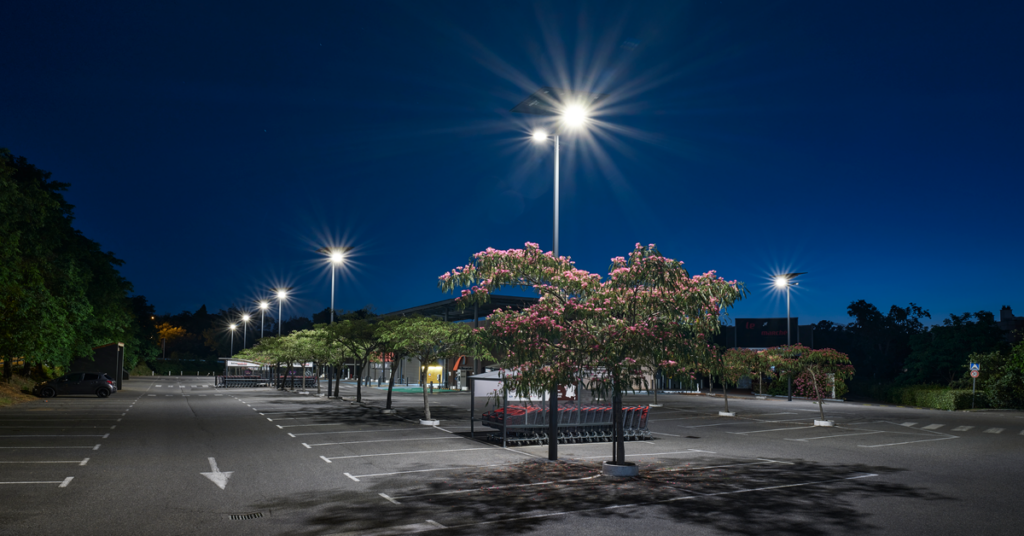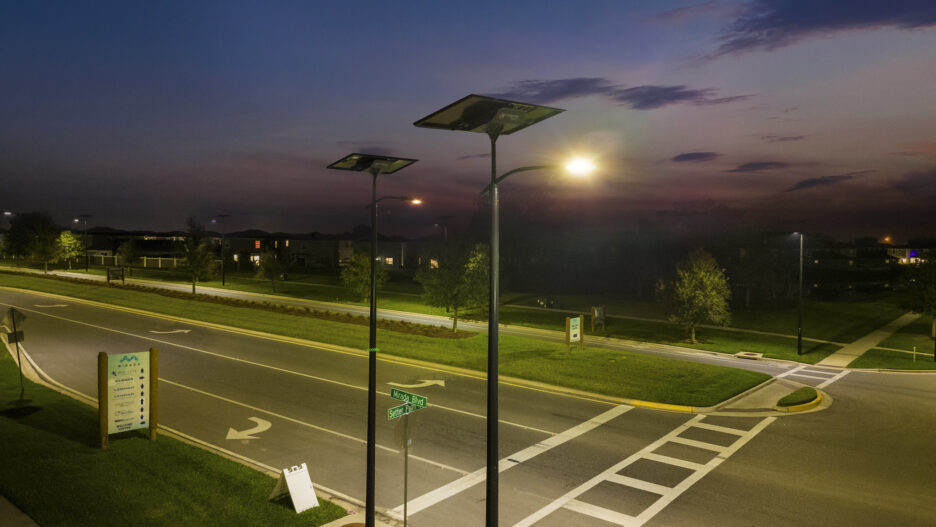Power Down, Safety at Risk
South Carolina’s storm season can quickly turn infrastructure into scenes of chaos, and the lighting grid is often the first to falter. Just recently, a lightning bolt struck a transformer along Highway 17 in Mount Pleasant, triggering a spectacular fireball and immediately cutting power to nearby streetlights and traffic signals. Commuters found themselves navigating dark intersections for nearly three hours while emergency crews and Dominion Energy worked to restore order.
This event is far from rare. Nearly 100,000 lightning strikes were recorded across the state in just one summer week, underscoring growing volatility. When the grid drops out, traditional wired lighting fails, leaving streets dark, traffic chaotic, and safety compromised. That’s why communities need a lighting system that stays on, storm or shine.
South Carolina’s Storm Problem
South Carolina’s subtropical climate brings more than just heavy rain and high winds; it brings frequent power outages that leave communities vulnerable when they need lighting the most. From coastal hurricanes to inland lightning strikes, the state faces year-round threats to its electrical grid. In areas like Charleston, Columbia, and along the I-26 corridor, it’s not uncommon for a single storm to disable entire stretches of lighting infrastructure, putting both drivers and pedestrians at risk after dark.
Recent events highlight the scale of the problem. A lightning strike in August ignited a transformer explosion near a commuter route, creating a fireball that shut down the lighting and sent plumes of smoke over the highway. This isn’t an isolated case; it’s a symptom of a fragile grid overstretched by demand and battered by weather extremes. For South Carolina municipalities, the question isn’t if the lights will go out; it’s when and how long it will take to get them back on.
Why Grid-Connected Lighting Fails First
When South Carolina’s skies light up with storms, the first thing to go dark is often the streetlighting. That’s because traditional lighting infrastructure isn’t just outdated; it’s overly dependent on a fragile network that breaks under pressure.
Here’s why grid-tied systems are the weakest link during storms:
- Vulnerable Transformers: A single lightning strike can destroy a transformer, knocking out entire blocks of lighting.
- Overhead Poles Go Down: Strong winds and fallen trees frequently bring down utility poles, cutting off power for days.
- Buried Cabling Floods: Coastal and low-lying regions face water intrusion that damages underground wiring.
- Slow Restoration: Repairs require inspections, trenching, and utility coordination, delaying light return to streets and parks.
For South Carolina communities, this means more than inconvenience. It means longer blackout periods, reduced nighttime safety, and higher municipal repair costs, all because the lighting system is tethered to a failing grid.

The Fonroche Difference: Built to Outlast the Grid
While grid-connected systems go dark in a storm, Fonroche lights stay on, no matter the weather, no grid required.
What sets Fonroche SmartLights apart?
- Fully Off-Grid: No poles, no wires, no transformers. Each unit is self-powered and self-contained.
- Power 365™ Technology: Our proprietary energy management system stores enough power for 365 nights of uninterrupted lighting, even through weeks of rain or cloud cover.
- Rapid Deployment: Lights install in under an hour per unit and operate immediately, no utility hookup or permitting delays.
In storm-prone areas like Charleston, Myrtle Beach, and Hilton Head, Fonroche solar lighting delivers reliability where traditional systems fail. When the next outage hits, your streets, parks, and public spaces won’t be left in the dark.
Safer Roads, Even in Blackouts
When the grid goes down, darkness can turn dangerous. Without lighting, intersections become accident zones, evacuation routes lose visibility, and pedestrians are put at risk.
Fonroche SmartLights solve that.
- Critical intersections remain illuminated, reducing the risk of collisions during storms or power outages.
- Evacuation corridors remain visible, supporting smoother, safer movement during emergencies.
- Public spaces, such as shelters, schools, and parks, remain lit, offering comfort and security when communities need it most.
Whether it’s a hurricane aftermath or a lightning-triggered blackout, Fonroche keeps South Carolina moving safely, even when the power stops.
Ideal Use Cases in South Carolina
In a state shaped by coastal weather, flooding risks, and fast-growing infrastructure needs, Fonroche solar lighting delivers unmatched resilience. Emergency shelters remain safely illuminated even during prolonged outages, ensuring community access and visibility when it’s needed most. Flood-prone corridors benefit from lighting systems that don’t rely on underground cables vulnerable to water damage or erosion.
Along coastal highways, where salt air and storm winds can quickly degrade traditional infrastructure, Fonroche’s grid-free design provides a durable, low-maintenance solution. In public transit zones, from park-and-ride lots to rural bus stops, reliable lighting improves rider safety and operational continuity, no matter the grid’s condition. Across South Carolina, these systems prove their value where grid lighting can’t keep up.
FAQs: Solar Lighting During Storms
Do solar lights still work in cloudy weather?
Yes. Fonroche SmartLights are engineered to perform even in extended cloudy conditions. Each unit uses high-efficiency panels paired with our proprietary Power 365™ energy storage system, which stores enough energy to power the light for multiple nights without sun.
How are the systems protected from wind and debris?
Fonroche systems are hurricane-rated to withstand winds exceeding 140 mph. The poles are engineered for structural resilience, and the energy components are sealed in tamper-resistant casings, mounted high above ground to avoid flood and debris damage.
What’s the battery autonomy?
Power 365™ provides reliable lighting for up to 5 consecutive nights without sun, depending on the lighting profile selected. This ensures consistent performance even during prolonged storm events when sunlight is minimal.
Weatherproof Your Lighting Plan Today
South Carolina’s weather won’t wait, and neither should your infrastructure. Fonroche Smart Solar Lighting delivers storm-resilient, grid-free illumination that keeps roads, parks, and public spaces lit when traditional systems go dark.
No trenching. No cabling. No utility delays. Just dependable lighting that works through the worst weather the Lowcountry can deliver.

